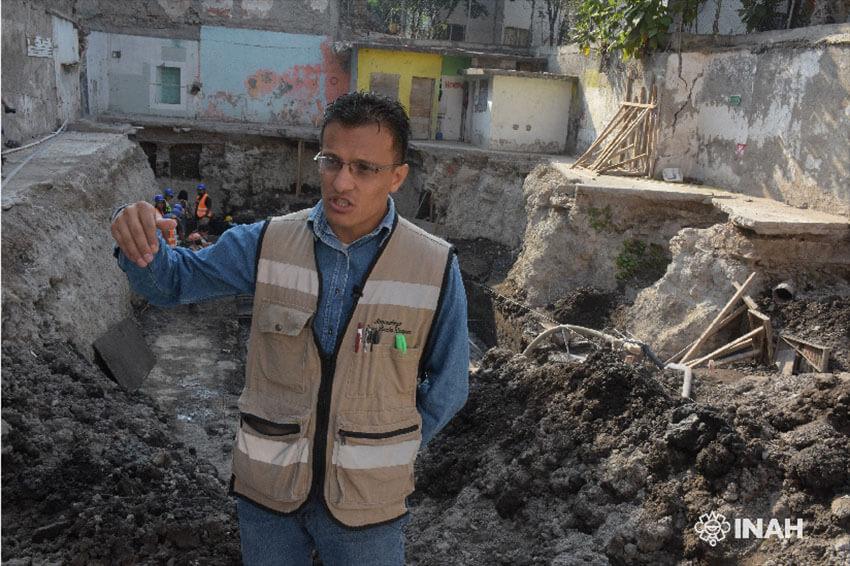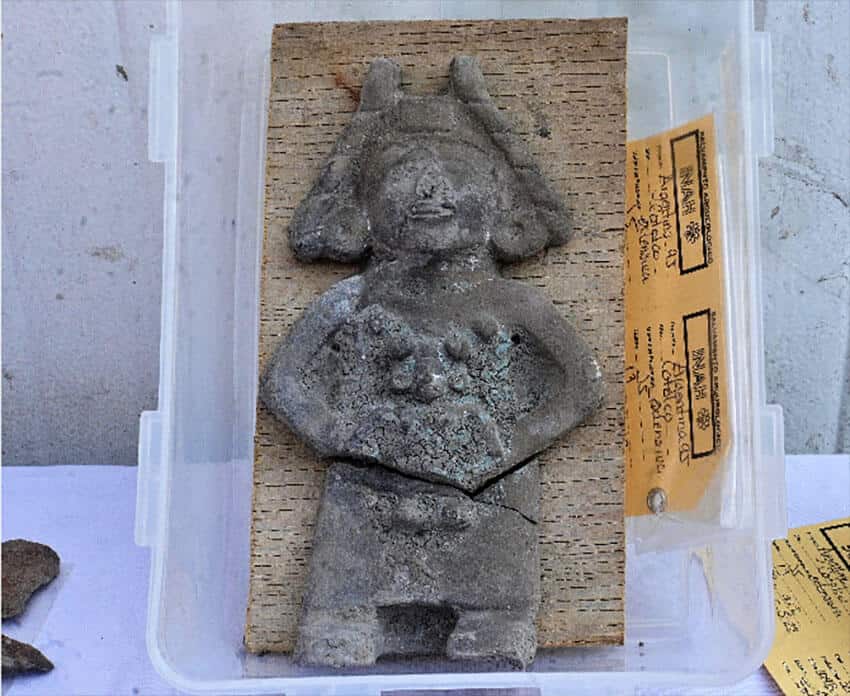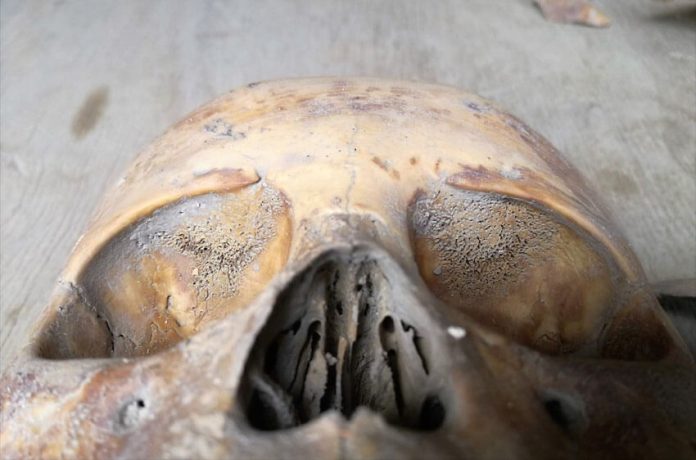Archaeologists in Mexico City have discovered the remains of four Mexica children buried in the early years of Spanish colonial rule.
National Institute of Anthropology and History (INAH) archaeologists found a burial site with skeletons inside what they believe was a traditional four-room Mexica home. Located in what is now the Lagunilla neighborhood in Mexico City’s historical center, the burial site has been dated to between 1521 and 1620, a period that corresponds to the first century of Spanish colonial rule.
Juan Carlos Campos Varela, the archaeologist who led the excavation project, said the sex of the four minors hasn’t been determined and doing so is difficult, but researchers believe they died of illness during a period of crisis before being buried in a traditional pre-Hispanic style. There is no evidence that the children were killed as part of a ritual sacrifice, Campos said.
Based on the size of the bones and teeth, INAH believes the oldest child died between the ages of six and eight. An analysis of the skull suggested that the child suffered “an illness directly associated with anemia, infectious processes, parasitic disease and dietary imbalance,” INAH said in a statement.

The youngest child may have been a baby “spontaneously aborted due to a dietary deficiency or maternal stress,” the institute said.
Campos said the offerings buried with two of the children are of special interest. “Two didn’t have offerings … [but] the probable aborted baby was accompanied by two tripod ceramic bowls and was lying in a globular pot of 35 centimeters diameter and a height of 50 centimeters,” he said.
“This speaks of the survival of a funerary practice that sought to return [the baby] to the mother’s womb, represented by the pot.”
The oldest child was buried with five small pots, two winches for yarn and a figurine that shows a woman holding a young girl, INAH said. The figurine offering suggests that the skeletal remains are of a girl, it said.

INAH also noted that “a blue-pigmented vessel” containing the bones of a bird was found in a separate location on the site of the Mexica home. “Although it lacks the attributes of Tláloc, god of rain, its coloring could associate it with the aquatic world, still revered in the pre-Hispanic way,” the institute said.
Campos said the Mexica people faced harsh conditions after the arrival of the Spanish in their capital, Tenochtitlán, and were unable to escape during the siege and after the fall of the city.
The discovery of the skeletons of the four children came three years after archaeologists found seven graves from the early colonial period near the site of the Mexica home.
“Three years ago we excavated in front of the property we’re working on now and we found three adult graves and four children’s graves, also from the early colonial period,” Campos said.
“If we add those children to those we have today, the evidence indicates that at least in this neighborhood … those who were dying the most were infants,” he said.
The discovery of remnants of the Mexica culture is fairly common in Mexico City. Last December, INAH announced the discovery of a post-conquest Mexica altar at a property near Plaza Garibaldi, Mexico City’s home of mariachi music, while archaeologists in 2020 found 119 human skulls in a circular skull tower on a street behind the metropolitan cathedral and next to the Templo Mayor, the main temple of Tenochtitlán.
Mexico News Daily
